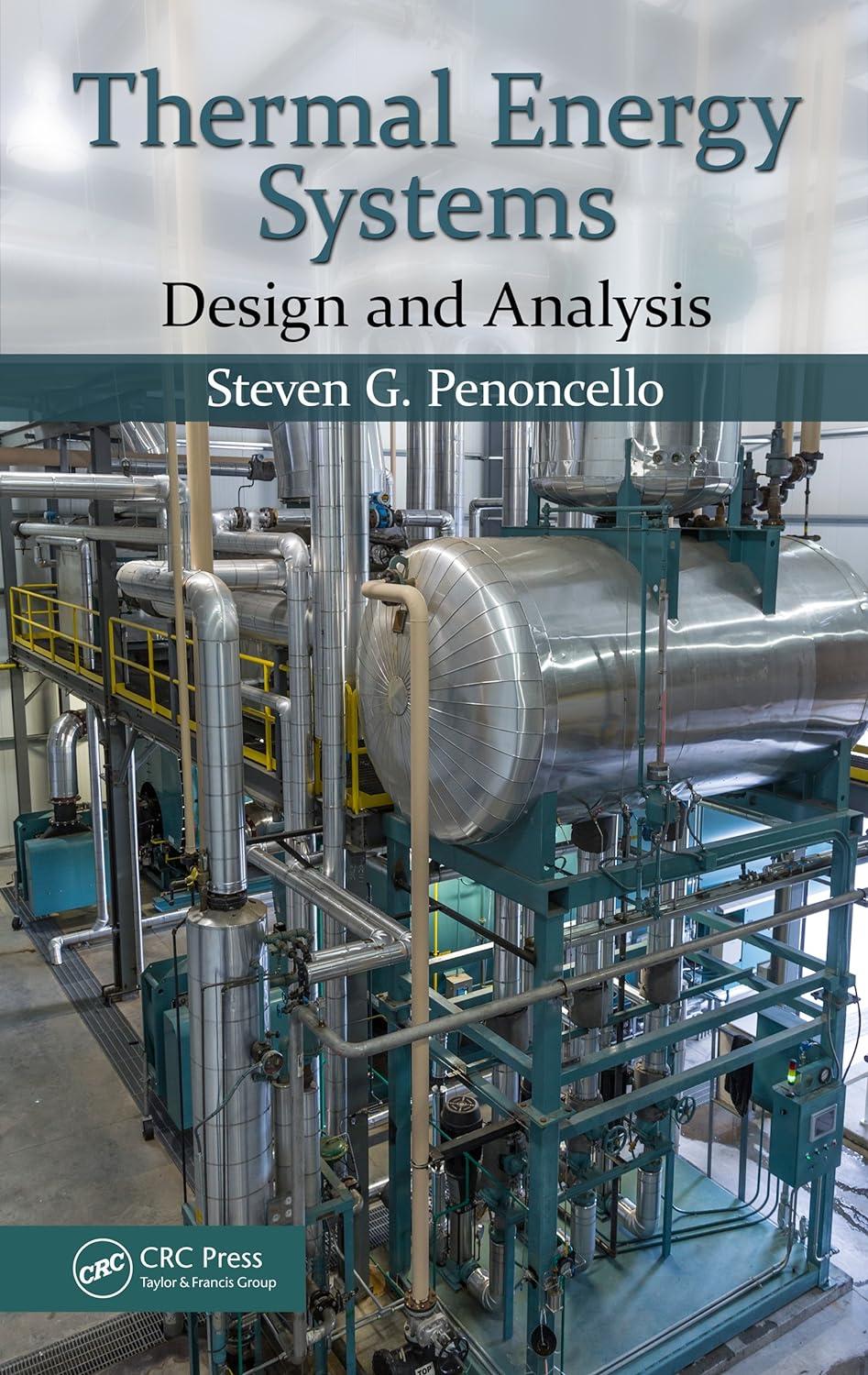6.9 Process steam boilers often incorporate a continuous blowdown scheme to eliminate impurities that can accumulate over
Question:
6.9 Process steam boilers often incorporate a continuous blowdown scheme to eliminate impurities that can accumulate over time. One possible way to accomplish this is shown in Figure P6.9A. In this system, the boiler is operating at 300 psia. Saturated vapor steam leaves the boiler as the high-
pressure process steam flow at a flow rate of 1,000,000 lbm/h. Saturated liquid water, containing the impurities, exits the boiler at 300 gpm. The dirty water is then flashed into a separator through a valve. The separator pressure is 65 psia. Saturated vapor leaves the separator as the low-pressure process steam flow. The high-pressure and low-pressure process steam flows make their way through the plant and eventually condense, combine, and return to the boiler as a liquid boiler feedwater at 102°F. The saturated liquid at the separator exit is discarded. To maintain steady operation, makeup water must replace the discarded dirty water. This makeup water enters the boiler at 78°F. Simulate this system and determine the following operating parameters:
a. The mass flow rate (lbm/h) of the low-pressure process steam
b. The volumetric flow rate (gpm) of the discarded dirty water
c. The temperature of the discarded dirty water
d. The boiler heat transfer rate required to maintain continuous, steady-state operation (Btu/h)
The result of your simulation should reveal that the temperature of the discarded dirty water is quite hot. It is proposed that this hot, dirty water be used to preheat the makeup water going into the boiler in an attempt to reduce fuel cost. This can be accomplished by adding a heat exchanger as shown in Figure P6.9B. It is reasonable to treat the heat exchanger as a counterflow regenerative heat exchanger. The mass flow rates of the water on each side are the same (the makeup water must replace the discarded dirty water).
However, the heat capacities of the water on each side of the heat exchanger are slightly different. In reality, this difference is very small. Therefore, the thermal capacitance rate of each flow can be assumed to be equal without introducing too much error into the calculation. A heat capacity value of 1.01 Btu/lbm·R is a reasonable estimate of cp for the water passing through the heat exchanger. The UA product of the heat exchanger is 9580 Btu/h·R. Simulate this modified system and determine the following operating conditions:
e. The temperature of the discarded dirty water
f. The temperature rise of the makeup water as it flows through the heat exchanger g. The boiler heat transfer rate required to maintain continuous, steady-state operation (Btu/h)
This particular system operates continuously throughout the year. The heat transfer rate is provided by the combustion of natural gas that costs $0.70/therm. (A therm is 100,000 Btu.) Determine the following:
h. The annual energy cost savings realized by incorporating the regenerative heat exchanger as shown in Figure P6.9B.
i. If management requires a minimum rate of return of 25% and the heat exchanger is expected to have a 50-year life, how much money can be spent on the heat exchanger? Does the heat exchanger appear to be a viable investment?
Step by Step Answer:

Thermal Energy Systems Design And Analysis
ISBN: 9781482245998
1st Edition
Authors: Steven G. Penoncello






